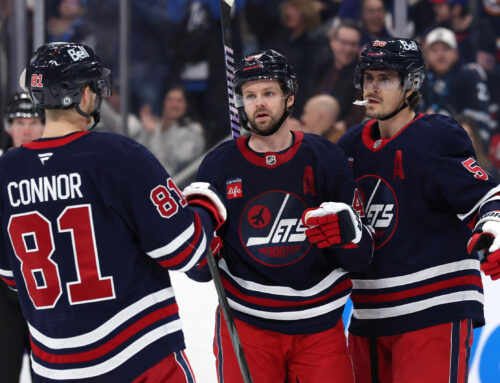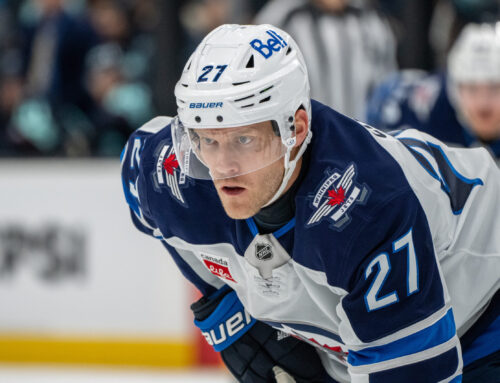
Analyzing the goaltender situations in Edmonton, Vancouver and Arizona.
Every year a few teams end up with goaltending controversies whether it is due to injuries to, or poor performance by, their respective regular starters. This year is no different as there are five teams with either platoons or potential simmering goaltender controversies. In cases such as these betting on the right goalie to emerge from the situation is a good way to add goaltending depth. Last year Devan Dubnyk emerged from Arizona to take over the starting job in Minnesota and went on to go on an epic run during the second half. He has continued his strong play posting a save percentage that ranks amongst the NHL’s best goalies. Of the teams with existing goalie platoons, or controversies, St Louis and Dallas both have two established starters but Arizona, Edmonton and Vancouver all have goalies with the potential to emerge as a regular starter either this year or next.
Edmonton
In Edmonton there are two goalies with similar overall numbers but entirely different stories based on how the season has gone. Edmonton is a tough situation for goalies to thrive in as the Oilers still allow a lot of shots, more than 30 per 60 minutes, and amongst the most high danger shots of any team in the league. While the Oilers are better defensively than they used to be it is still basically the same situation in which only one goalie has been able to post even an average save percentage while playing 30 or more games in the last five years.
Anders Nilsson started the season better than Cam Talbot did and looked like he had taken over the starting position. For the month of November he had a 91.5% save percentage as he won four of the 10 games he started. That was by far his best month though. His October and December were not nearly as good as he posted a save percentage just over 90% in each of those months. The good news is that based on the type of shots he has faced his numbers are probably closer to average. That explains why his adjusted save percentage is almost a full point higher than his actual save percentage. It is also encouraging that more than half of his starts have been quality starts. These underlying numbers suggest that Nilsson is better than what he has shown so far but he has yet to show that he is anything more than a backup.
Cam Talbot started the season slowly with horrible months of October and November. Even given the porous Edmonton defense his sub-90% save percentage over the first two months of the season was ridiculously bad. Since December Talbot has been a different goalie with better than a 93% save percentage in his last 10 games. That will not last the rest of the season but he has shown the ability to put up an elite save percentage previously with the Rangers. The big difference for Talbot in December has been a return to an average save percentage on medium danger shots and a significant boost in his high danger save percentage. That is not much higher than it was with the Rangers so there is some precedent for this level of performance. Talbot will not put up huge numbers behind this Oilers defense but he does look like the best bet to succeed of the two goalies in Edmonton.
Vancouver
Ryan Miller is no longer an elite goalie, and has not been one for the last five years. In the last two years he has not even been league average, posting save percentages at or below 91%. Last year he struggled on medium danger shots but was amongst the best on high danger shots. This year he has been a bit better on medium danger shots but has been only league average on high danger shots. The end result is that his overall save percentage slipped below 91% this season. With this drop in save percentage he is putting up quality starts less than 40% of the time, a metric by which 60% signifies a good starting goalie. His numbers are considerably worse on the penalty kill, which has contributed to his downfall and the Canucks being better without him during his injury. Despite this he still has one year left on his contract with a six million dollar cap hit so he will continue to get his share of the starts but with these numbers he will not be worth playing when he does start.
The other option, or the latest goalie to press the goaltending issue and potentially create a controversy in the Canucks’ net, is once highly touted prospect Jacob Markstrom. He is now getting a consistent run in the NHL and has been very good in Miller’s absence but it is a small sample size. Markstrom has had success in the AHL posting a save percentage of 92% or better in three of the five years in which he played more than 30 games. He was slightly better than average in one of the other two years. That would mean more if Markstrom had been successful for an extended period of time in the NHL. Other than a seven game sample five years and this stretch of elite level hockey, his play in the NHL has been lacking at best. There are couple interesting trends in Markstrom’s numbers, he is balancing a low save percentage on medium danger shots with a very high save percentage on high danger shots. There is a lot to be weary of with Markstrom but he his floor is pretty similar to where Miller is now and his ceiling is higher, making him a good gamble while Miller is injured as well as for the future.
Arizona
Before his injury Mike Smith’s numbers at even strength told a contradictory story. His overall save percentage at even strength was just 92% but his adjusted save percentage was 91.5%. The reason for this difference is Smith’s very low save percentage on high danger shots. Whereas the best goalies post a save percentage of 85% on those shots Mike Smith was only stopping 73%. The Coyotes allow a lot of shots but most are from the outside or from distance so Smith’s inability to stop high danger shots is not as bad as it otherwise could be. Smith was also struggling considerably on the penalty kill, which is why his overall save percentage is under 91%. Smith has some job security given his contract, he is signed through the 2018/19 season with an AAV of 5.67 million, and where the Coyotes are in their rebuild. Furthermore, the Coyotes have shown considerable faith in Smith already having traded Devan Dubnyk last year when Smith was having a much weaker season. Dubnyk was coming off a couple bad seasons but had a semblance of previous success in his career in the NHL. There is no current option of that ilk on this Coyotes team, but there is an interesting candidate.
Louis Domingue has been lights-out since Mike Smith’s injury, which is a huge positive because Anders Lindback has repeatedly shown that he is not close to being an average NHL goalie. This year it became clear again that he cannot handle more than backup duties especially with his sub-90% save percentage thus far in his limited action this season. Domingue has provided the Coyotes with outstanding goaltending in the 10 games he has played. He has a 93.6% save percentage overall, which is Vezina-winner level and thus it is reasonable to assume that it will not continue. He has rarely been able to post a save percentage over 91.5% through junior and his time in the AHL and ECHL. Without the track record or high-level goaltending and with Sean Burke no longer with the team, there does not appear to be a reason to think that this is anything other than short hot streak.
One Comment
Leave A Comment
You must be logged in to post a comment.





 FLA
FLA CHI
CHI NYR
NYR PIT
PIT L.A
L.A COL
COL CBJ
CBJ TOR
TOR MTL
MTL ANA
ANA
 PHI
PHI VAN
VAN BUF
BUF

So completely differing views on Domingue here by the writers eh.
I've some confidence in Domingue after all goalies show up and take the league by storm once in a while. Does anyone remember Tim Thomas?
Watching King Louis play (easier nickname than his last name) he looks very calm in the net and the team is playing with extreme confidence in front of him. He might not continue to post crazy stats but he's definitely earned more trust than Nilsson and, Talbot have.
But for full disclosure I own both King Louis and Markstrom on my team this year so I'm riding the wave of excellence.